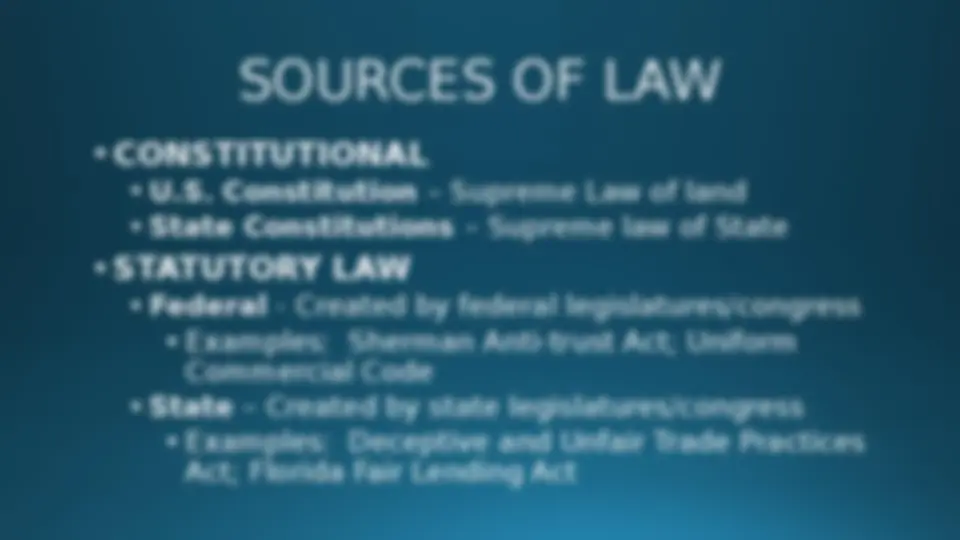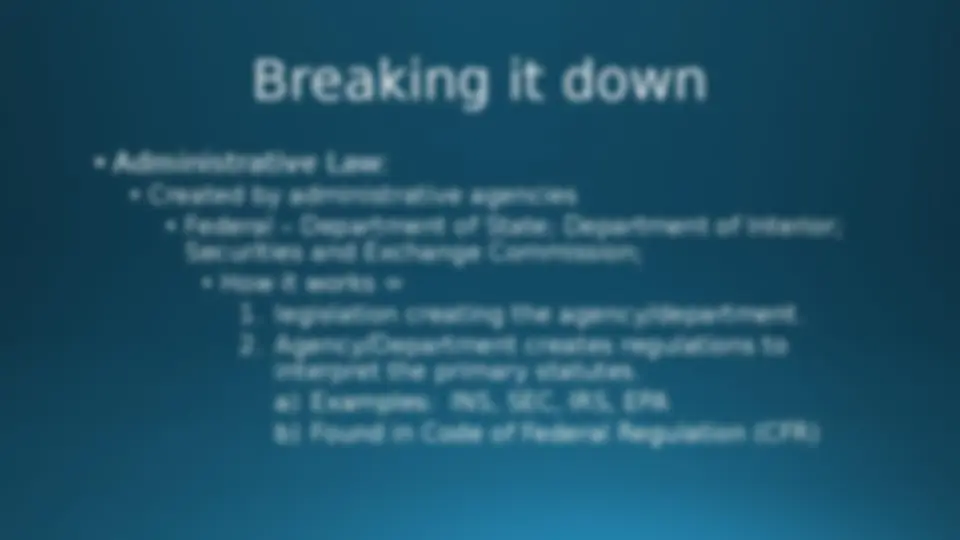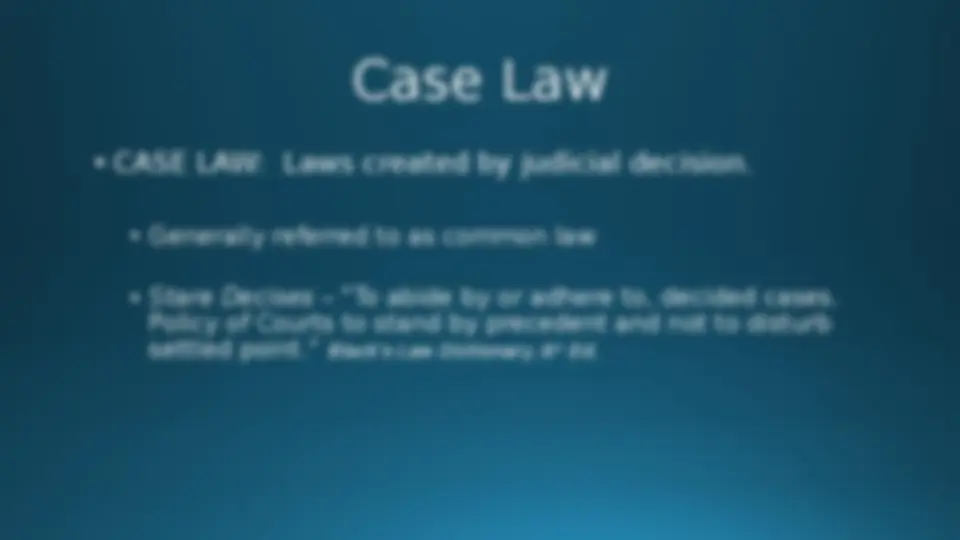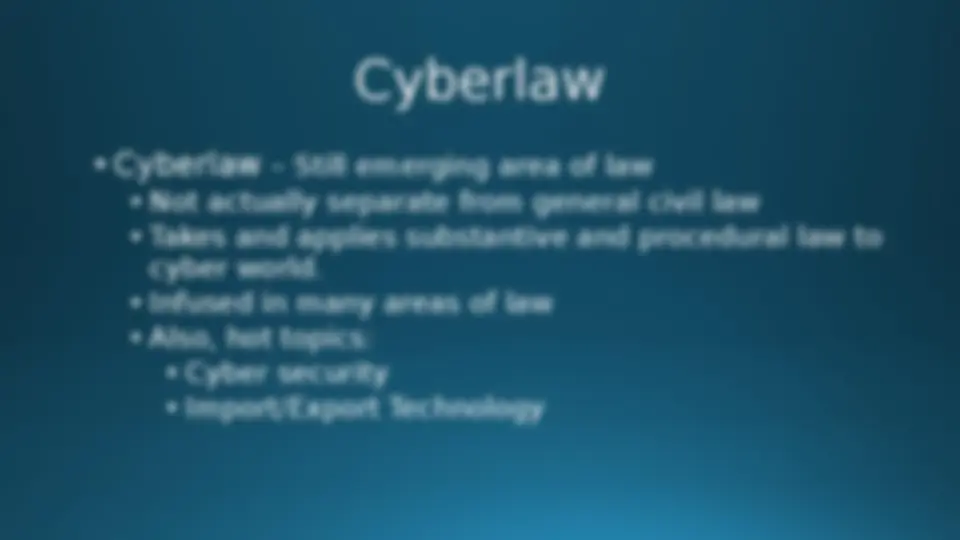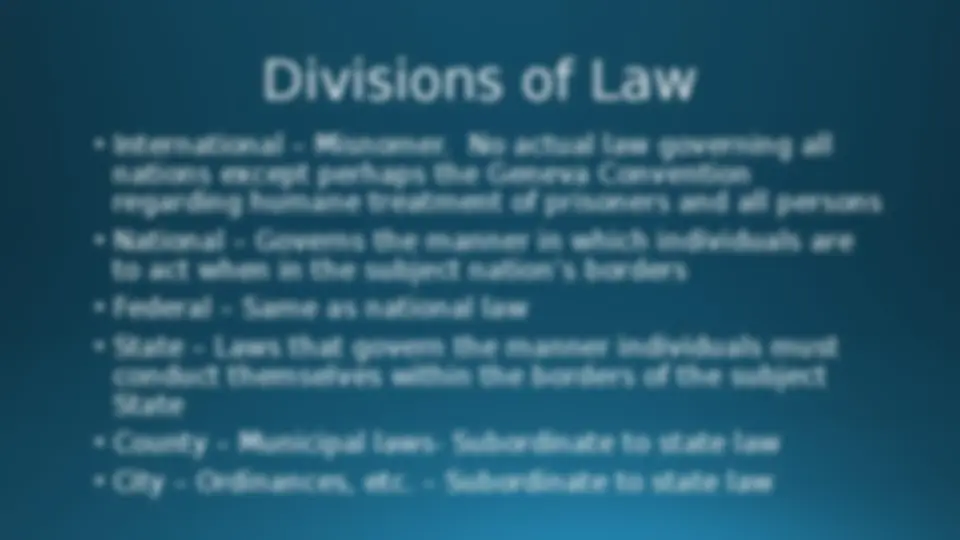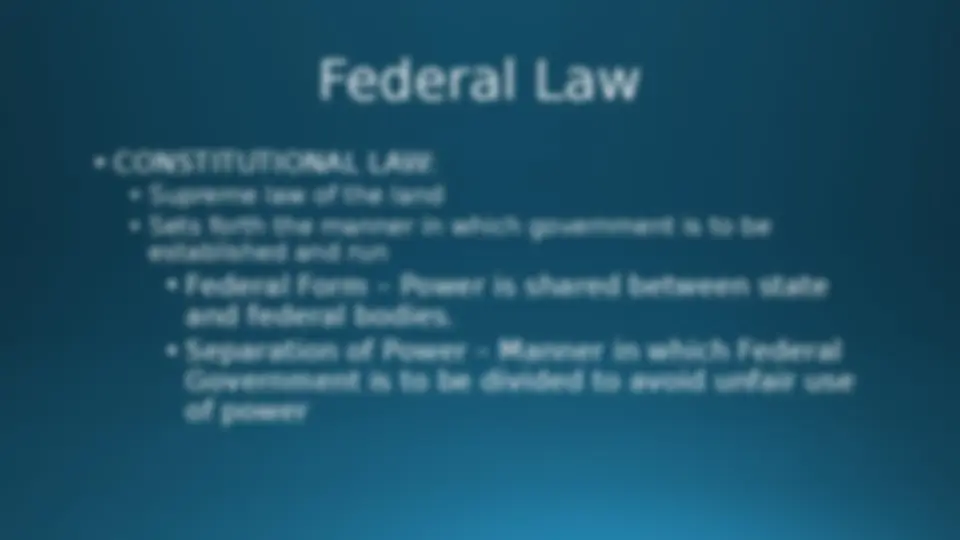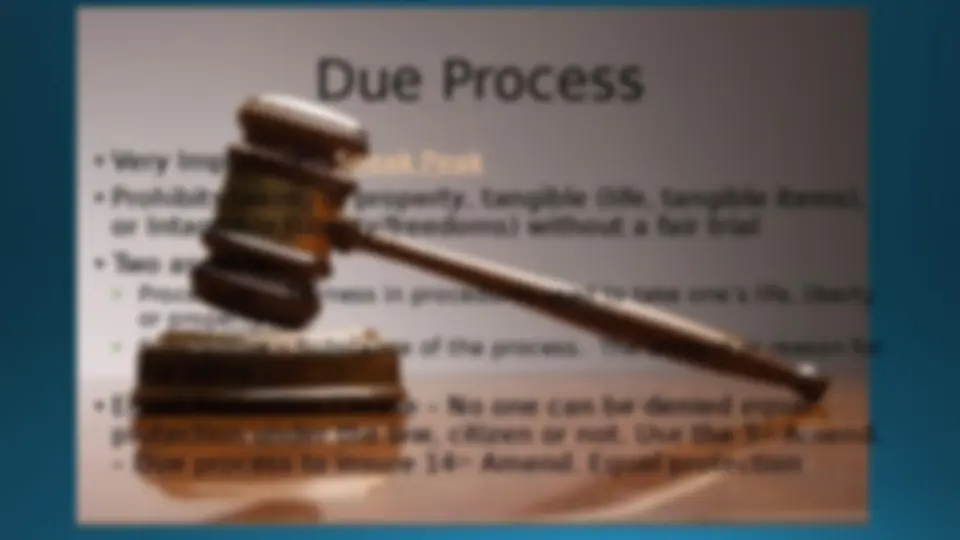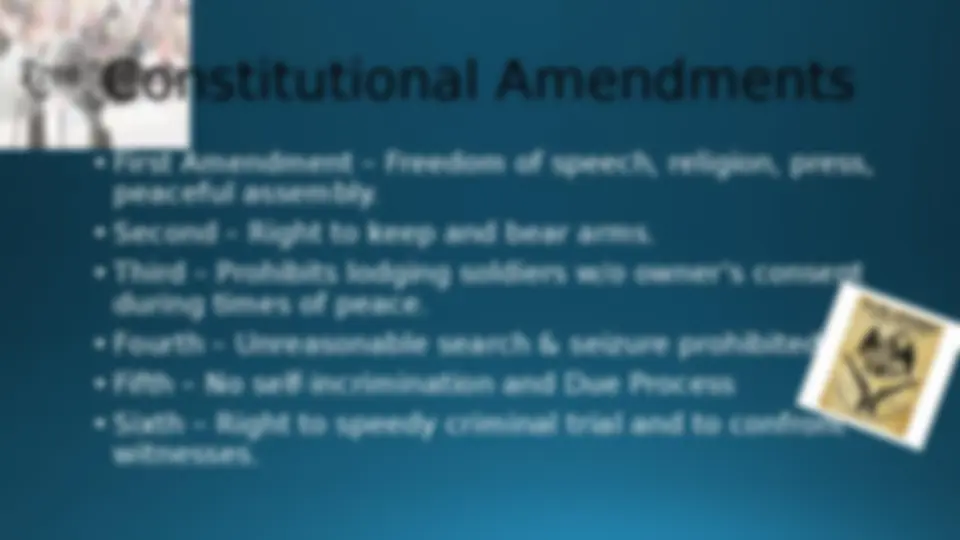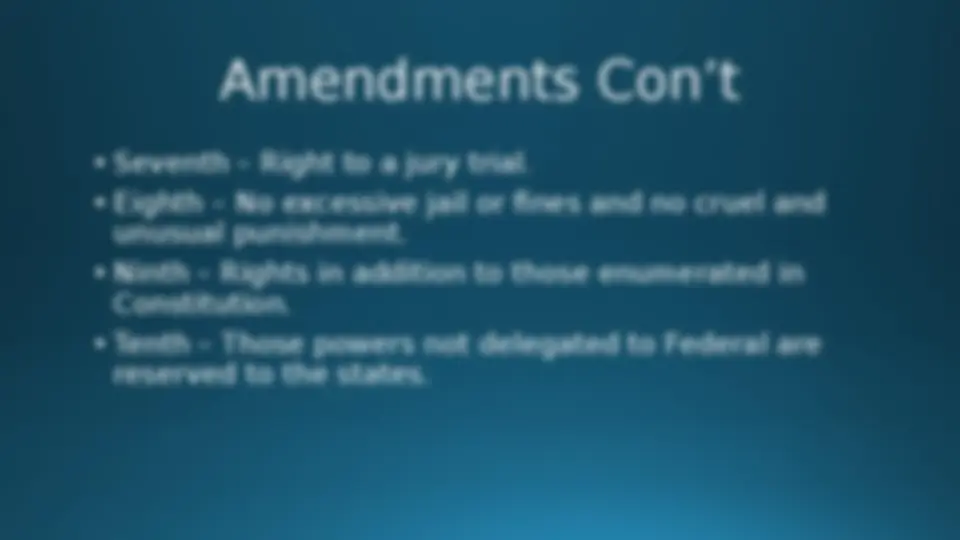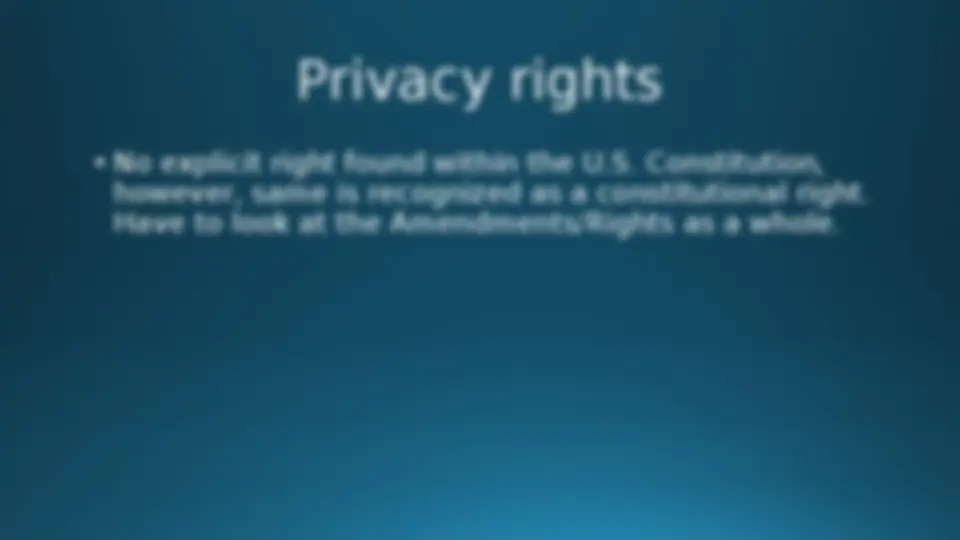Download Basics of the Law - Legal Aspects of Managing Technology | BUL 3564 and more Study notes Business and Labour Law in PDF only on Docsity!
Basics of the Law
- (^) Sources of American Law:
- (^) U.S. Constitution and Bill of Rights
- (^) Statutes
- (^) Regulations
- (^) Case law
**Books, articles and the like ≠ law
not sources of law, secondary or otherwise
may be relied on to interpret the law, but, not
actually law
Breaking it down
- (^) Administrative Law:
- (^) Created by administrative agencies
- (^) Federal – Department of State; Department of Interior;
Securities and Exchange Commission;
- (^) How it works =
- legislation creating the agency/department.
- Agency/Department creates regulations to
interpret the primary statutes.
a) Examples: INS, SEC, IRS, EPA
b) Found in Code of Federal Regulation (CFR)
Case Law
- (^) CASE LAW: Laws created by judicial decision.
- (^) Generally referred to as common law
- (^) Stare Decises – “To abide by or adhere to, decided cases.
Policy of Courts to stand by precedent and not to disturb
settled point.” Black’s Law Dictionary, 6
th Ed.
Areas of Law
- (^) Civil
- (^) General civil
- (^) Contracts, negligence, product liability
- Family Law
- (^) Divorce, adoption, support
- (^) Juvenile dependency
- (^) Criminal
- (^) Theft, murder, assault, battery, etc.
- (^) Misdemeanor
- (^) Felony
Cyberlaw
- (^) Cyberlaw – Still emerging area of law
- (^) Not actually separate from general civil law
- (^) Takes and applies substantive and procedural law to
cyber world.
- (^) Infused in many areas of law
- (^) Also, hot topics:
- (^) Cyber security
- (^) Import/Export Technology
Federal Law
• CONSTITUTIONAL LAW:
- (^) Supreme law of the land
- (^) Sets forth the manner in which government is to be
established and run
- (^) Federal Form – Power is shared between state
and federal bodies.
- (^) Separation of Power – Manner in which Federal
Government is to be divided to avoid unfair use
of power
Separation of Power
Due Process
- (^) Very Important! Sneak Peak
- (^) Prohibits taking of property, tangible (life, tangible items),
or Intangible (liberty/freedoms) without a fair trial
- (^) Two aspects:
- (^) Procedural - Fairness in procedures used to take one’s life, liberty
or property.
- (^) Substantive – Substance of the process. The content or reason for
the taking.
- (^) Equal Protection Clause – No one can be denied equal
protection under the law, citizen or not. Use the 5
th Amend.
th Amend. Equal protection
Constitutional Amendments
- (^) First Amendment – Freedom of speech, religion, press,
peaceful assembly.
- (^) Second – Right to keep and bear arms.
- (^) Third – Prohibits lodging soldiers w/o owner’s consent
during times of peace.
- (^) Fourth – Unreasonable search & seizure prohibited.
- (^) Fifth – No self-incrimination and Due Process
- (^) Sixth – Right to speedy criminal trial and to confront
witnesses.
Types of Protected Speech
- (^) Symbolic:
- (^) Gestures, movements, articles of clothing.
- (^) Corporate Political Speech
- (^) Commercial Speech – Can be restricted if the following
met:
- (^) Implements a substantial gov’t purpose;
- (^) Prohibition directly advances that interest;
- (^) Goes no further than necessary.
Unprotected Speech
Sneak Peak (Falwell v. Hustler Magazine and Larry
Flynt)
- (^) Violations of criminal laws
- (^) Speech likely to incite violence
- (^) Obscene speech
- (^) Miller v. California Test:
- (^) Average person finds it violates contemporary community standards;
- Work taken as a whole appeals to prurient interests;
- (^) Work is patently offensive;
- (^) Work lacks serious redeeming literary, artistic, political or scientific
merit.
Please
Click

